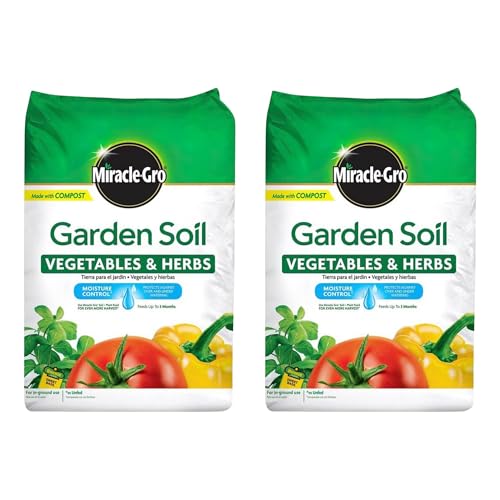Are you tired of watching your input costs skyrocket while your soil health deteriorates? What if there was a time-tested method that could slash your fertilizer bills, improve your soil structure, and boost your crop yields—all while supporting environmental sustainability?
Welcome to the world of green manure, a game-changing practice that’s helping American farmers build healthier, more profitable operations from the ground up.
What Is Green Manure and Why Should You Care?
Green manure refers to the practice of growing specific plants—called cover crops—with the primary purpose of incorporating them back into the soil to enhance fertility and structure. Unlike synthetic fertilizers that provide a quick nutrient fix, green manure works as a long-term soil investment strategy.
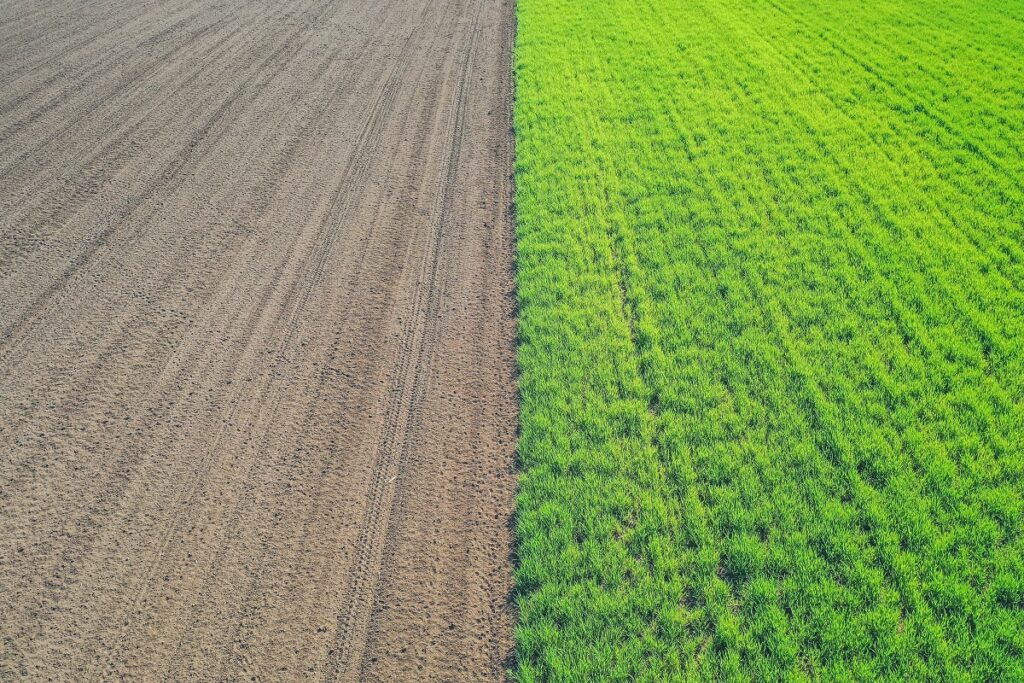
Think of green manure as nature’s own fertilizer factory. These specially chosen plants work around the clock to capture atmospheric nitrogen, break up compacted soil layers, and create a thriving underground ecosystem that benefits your cash crops for seasons to come.
The Science Behind Green Manure
The magic happens through several biological processes:
Nitrogen Fixation: Leguminous cover crops form symbiotic relationships with rhizobia bacteria, converting atmospheric nitrogen into plant-available forms—essentially creating free fertilizer.
Soil Structure Enhancement: Deep-rooted plants break through hardpan layers while fibrous root systems improve soil aggregation and porosity.
Organic Matter Addition: When incorporated, these plants decompose to form humus, the foundation of fertile soil.
Economic Benefits That Impact Your Bottom Line
Dramatic Reduction in Fertilizer Costs
According to USDA research, farmers implementing comprehensive green manure programs can reduce their nitrogen fertilizer needs by 50-80%. With nitrogen prices averaging $0.45-$0.60 per pound in recent years, this translates to savings of $40-120 per acre annually.
Real-world example: A 1,000-acre corn operation in Iowa reported saving $65,000 in fertilizer costs during their first three years of implementing crimson clover and winter rye rotation.
Improved Crop Yields and Quality
Green manure doesn’t just save money—it makes money. Studies from land-grant universities across the Midwest show:
- Corn yields increased by 8-15% following legume cover crops
- Soybean yields improved by 5-12% after cereal rye incorporation
- Wheat protein content increased by 0.5-1.2% with proper green manure management
Extended Equipment Life
Healthy soil structure reduces the need for intensive tillage, extending the life of tractors, implements, and reducing fuel costs. Farmers report 20-30% reduction in machinery wear when transitioning to green manure systems.
Environmental Benefits: More Than Just Good Stewardship
Erosion Control and Water Management
The NRCS estimates that proper cover crop implementation can reduce soil erosion by up to 90%. This protection is crucial given that the U.S. loses approximately 4.6 tons of topsoil per acre annually.
Green manure also improves water infiltration rates by 25-50%, reducing runoff and increasing drought resilience—particularly valuable as weather patterns become more unpredictable.
Carbon Sequestration and Climate Benefits
Cover crops sequester 0.1-1.0 tons of carbon dioxide equivalent per acre annually. With emerging carbon credit markets paying $15-50 per ton, this represents an additional revenue stream while supporting climate goals.
Biodiversity Enhancement
Green manure systems support beneficial insects, soil microorganisms, and wildlife. A diverse soil ecosystem means fewer pest problems and reduced need for costly interventions.
Top Green Manure Species for American Agriculture
Legumes: Nature’s Nitrogen Factories
Crimson Clover (Trifolium incarnatum)
- Nitrogen fixation: 40-150 lbs N/acre
- Best suited: Southeastern and Mid-Atlantic regions
- Planting window: August-September
- Key benefit: Excellent winter hardiness and spring growth
Hairy Vetch (Vicia villosa)
- Nitrogen fixation: 60-200 lbs N/acre
- Best suited: Northern states, cold-hardy
- Planting window: August-October
- Key benefit: Highest nitrogen contribution among winter legumes
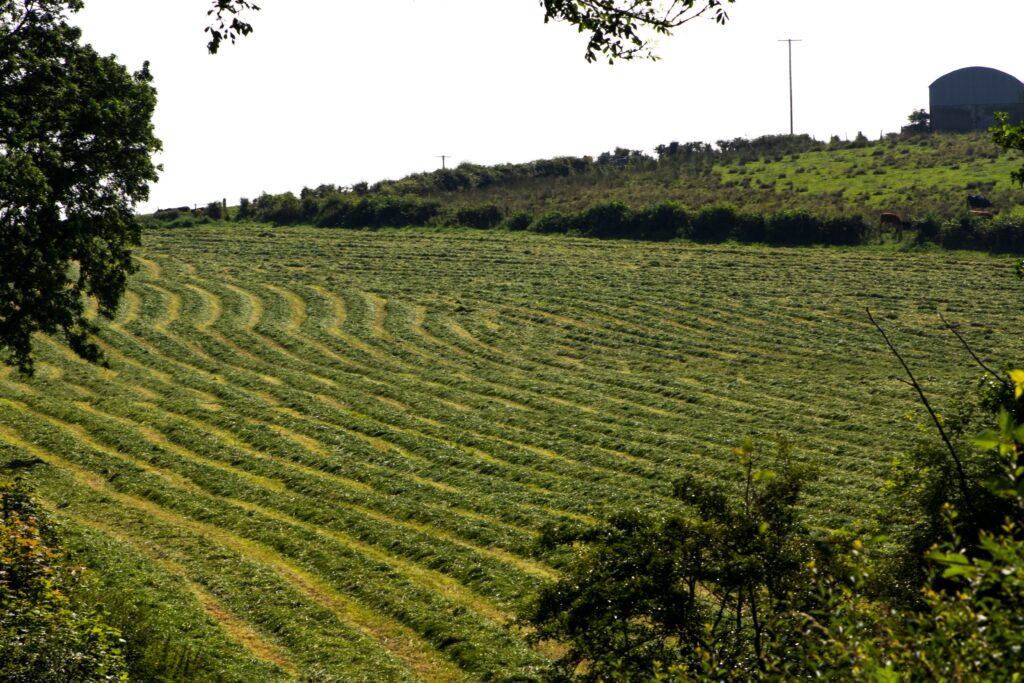
Red Clover (Trifolium pratense)
- Nitrogen fixation: 50-150 lbs N/acre
- Best suited: Cool, humid regions
- Planting window: March-April, August-September
- Key benefit: Dual-purpose for hay and green manure
Grasses: Soil Structure Champions
Winter Rye (Secale cereale)
- Carbon-to-nitrogen ratio: 25-40:1
- Best suited: All regions, extremely hardy
- Planting window: September-November
- Key benefit: Excellent soil compaction relief and weed suppression
Annual Ryegrass (Lolium multiflorum)
- Carbon-to-nitrogen ratio: 20-30:1
- Best suited: Moderate winter regions
- Planting window: August-October
- Key benefit: Quick establishment and biomass production
Oats (Avena sativa)
- Carbon-to-nitrogen ratio: 40-80:1
- Best suited: Northern regions
- Planting window: August-September
- Key benefit: Winter-kills naturally, easy spring management
Brassicas: Soil Health Specialists
Radishes (Raphanus sativus)
- Root depth: 3-6 feet
- Best suited: All regions
- Planting window: July-September
- Key benefit: Exceptional compaction relief and nutrient scavenging
Turnips (Brassica rapa)
- Root depth: 2-4 feet
- Best suited: All regions except extreme South
- Planting window: July-September
- Key benefit: Excellent livestock forage potential
Step-by-Step Implementation Guide
Step 1: Soil Testing and Goal Setting
Before selecting cover crops, conduct comprehensive soil tests including:
- pH levels
- Organic matter content
- Nutrient levels (N-P-K plus micronutrients)
- Soil compaction analysis
Pro tip: Work with your local NRCS office or extension agent to identify specific soil limitations and matching cover crop solutions.
Step 2: Species Selection Strategy
Choose cover crops based on:
- Primary goal (nitrogen fixation, erosion control, compaction relief)
- Climate zone and hardiness requirements
- Rotation schedule and cash crop compatibility
- Management preferences (spring termination method)
Step 3: Seeding Recommendations
Timing:
- Cool-season crops: August-October
- Warm-season crops: April-July
- Follow local first/last frost dates
Seeding rates (broadcast):
- Crimson clover: 15-20 lbs/acre
- Hairy vetch: 20-30 lbs/acre
- Winter rye: 60-90 lbs/acre
- Annual ryegrass: 15-25 lbs/acre
- Radishes: 8-12 lbs/acre
Equipment options:
- Broadcast seeder for simple establishment
- Drill seeding for precise placement
- Aerial seeding for difficult field conditions
Step 4: Management Throughout Growing Season
Fall establishment:
- Ensure adequate soil moisture for germination
- Monitor for pest issues (rare but possible)
- Avoid excessive nitrogen application that reduces legume nodulation
Spring management:
- Assess biomass production and nitrogen content
- Plan termination timing based on cash crop planting schedule
- Consider weather conditions for optimal incorporation
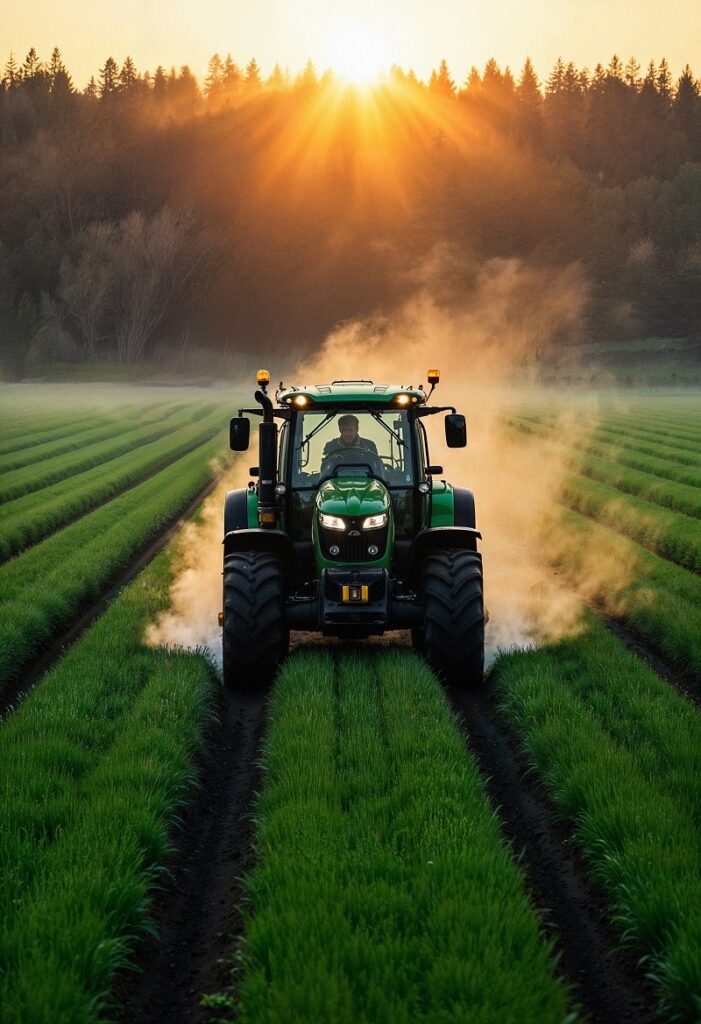
Step 5: Termination and Incorporation Methods
Mechanical termination:
- Mowing: Simple but may require multiple passes
- Rolling/crimping: Effective for creating mulch layer
- Tillage incorporation: Traditional method with immediate breakdown
Chemical termination:
- Herbicide application: Quick and thorough
- Timing critical: 2-3 weeks before planting
- Cost consideration: $15-25/acre for herbicide
Natural termination:
- Winter-killing species: Oats, mustards in northern regions
- Frost-sensitive species: Buckwheat, summer annuals
Common Mistakes and How to Avoid Them
Mistake #1: Poor Species Selection
Many farmers choose cover crops based on seed cost rather than suitability. A $30/acre investment in the right species outperforms a $15/acre investment in the wrong species every time.
Solution: Consult with local agronomists and consider multi-species mixes for diverse benefits.
Mistake #2: Inadequate Seeding Depth
Cover crop seeds are often smaller than cash crop seeds and require different planting depths:
- Small seeds (clover): ¼-½ inch deep
- Medium seeds (ryegrass): ½-¾ inch deep
- Large seeds (radish): ¾-1 inch deep
Solution: Calibrate equipment specifically for cover crop seeding rates and depths.
Mistake #3: Timing Errors
Late planting reduces biomass production and nitrogen fixation. Early termination wastes growth potential.
Solution: Plan cover crop schedules alongside cash crop rotations. Use growing degree day models for optimal timing.
Mistake #4: Nutrient Imbalance
Adding nitrogen fertilizer to legume cover crops reduces their nitrogen-fixing capacity.
Solution: Limit nitrogen application to starter rates (15-20 lbs N/acre) for mixed stands only.
Advanced Green Manure Strategies
Multi-Species Cocktails
Modern farmers are moving beyond single-species plantings to diverse mixes that provide multiple benefits:
Example Mix for Midwest:
- 40% winter rye (biomass and weed suppression)
- 30% crimson clover (nitrogen fixation)
- 20% radish (compaction relief)
- 10% annual ryegrass (quick establishment)
Integration with Precision Agriculture
GPS-guided variable rate seeding allows customized cover crop prescriptions based on soil variability within fields. This precision approach optimizes both costs and benefits.
Livestock Integration
Grazing cover crops adds another revenue stream while maintaining soil benefits. Proper management maintains 50% residue coverage for continued soil protection.
Economic Analysis: ROI on Green Manure Investment
Initial Investment (per acre):
- Seed costs: $25-60
- Seeding operation: $15-25
- Termination costs: $15-30
- Total first-year cost: $55-115/acre
Annual Benefits (per acre):
- Fertilizer savings: $40-80
- Yield improvements: $25-75
- Soil erosion prevention: $10-25
- Total annual benefits: $75-180/acre
Break-even timeline: 6-18 months
Regulatory Considerations and Programs
USDA Conservation Programs
Several federal programs support green manure adoption:
Conservation Stewardship Program (CSP):
- Annual payments: $15-40/acre for cover crop implementation
- Contract length: 5 years
- Additional payments for advanced practices
Environmental Quality Incentives Program (EQIP):
- Cost-share: 50-75% of implementation costs
- Technical assistance included
- Priority for beginning farmers
State and Local Incentives
Many states offer additional programs:
- Pennsylvania: $50/acre cover crop bonus
- Maryland: $25-75/acre through state programs
- Iowa: $25/acre through water quality initiatives
Check with your state department of agriculture for current offerings.
Future of Green Manure in American Agriculture
Technology Integration
Emerging technologies are making green manure more precise and profitable:
- Drone seeding for difficult terrain
- AI-powered species selection tools
- Satellite monitoring of biomass production
- Automated termination timing recommendations
Carbon Markets
Growing carbon credit programs provide additional revenue:
- Current prices: $15-50/ton CO2 equivalent
- Long-term contracts available
- Verification becoming more streamlined
Climate Adaptation
As weather patterns shift, green manure becomes increasingly valuable for:
- Drought resilience through improved water infiltration
- Flood protection through enhanced soil structure
- Temperature moderation through soil coverage
Getting Started: Your Green Manure Action Plan
Phase 1: Education and Planning (Month 1-2)
- Attend local workshops or webinars
- Consult with extension agents
- Conduct comprehensive soil testing
- Identify target fields for initial implementation
Phase 2: Small-Scale Trial (Year 1)
- Start with 50-100 acres
- Choose proven species for your region
- Document costs and benefits carefully
- Take soil samples before and after
Phase 3: Expansion (Year 2-3)
- Scale up based on trial results
- Experiment with multi-species mixes
- Integrate with precision agriculture tools
- Consider livestock integration opportunities
Phase 4: Optimization (Year 3+)
- Fine-tune species selection and timing
- Maximize conservation program participation
- Explore carbon credit opportunities
- Share experiences with neighbor farmers
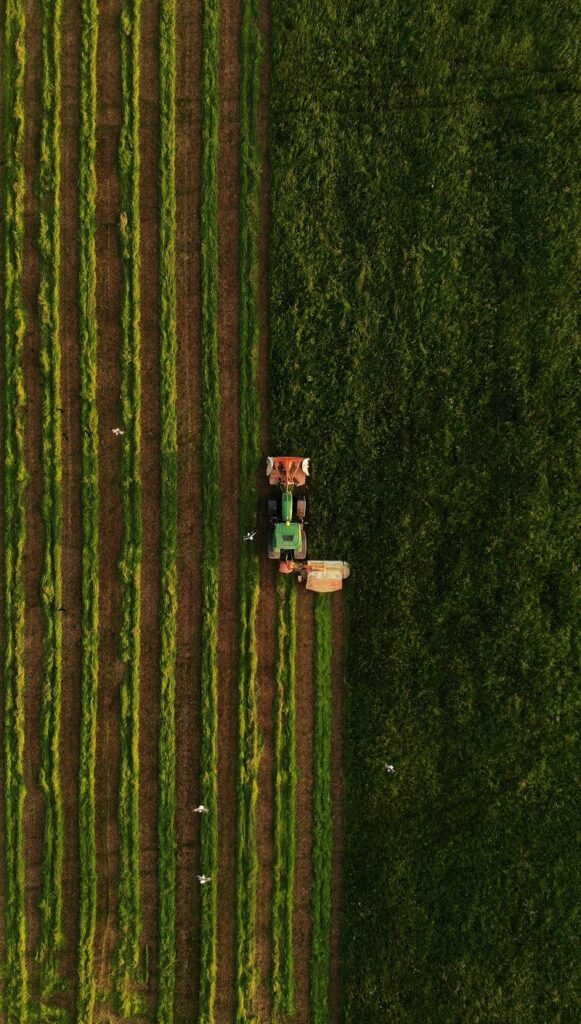
Conclusion: Invest in Your Soil’s Future Today
Green manure represents one of agriculture’s most proven yet underutilized tools for building sustainable, profitable farming operations. The evidence is clear: farmers who implement comprehensive green manure programs see improved soil health, reduced input costs, and enhanced crop performance within just a few growing seasons.
The initial investment may seem daunting, but consider this: every dollar spent on quality green manure implementation typically returns $2-4 in benefits over the following three years. More importantly, you’re building long-term soil capital that will benefit your operation for decades.
Climate uncertainty, rising input costs, and increasing environmental regulations make green manure not just an option—but a necessity for forward-thinking farmers. The question isn’t whether you can afford to implement green manure practices; it’s whether you can afford not to.
Start small, learn from your experiences, and gradually expand as you see results. Your soil—and your bottom line—will thank you.
Ready to transform your farming operation with green manure? Contact your local NRCS office or extension agent this week to begin developing your customized green manure strategy. The best time to plant cover crops was last season; the second-best time is this season.
What’s your experience with green manure or cover crops? Share your success stories or challenges in the comments below—your insights could help fellow farmers make better decisions for their operations.



